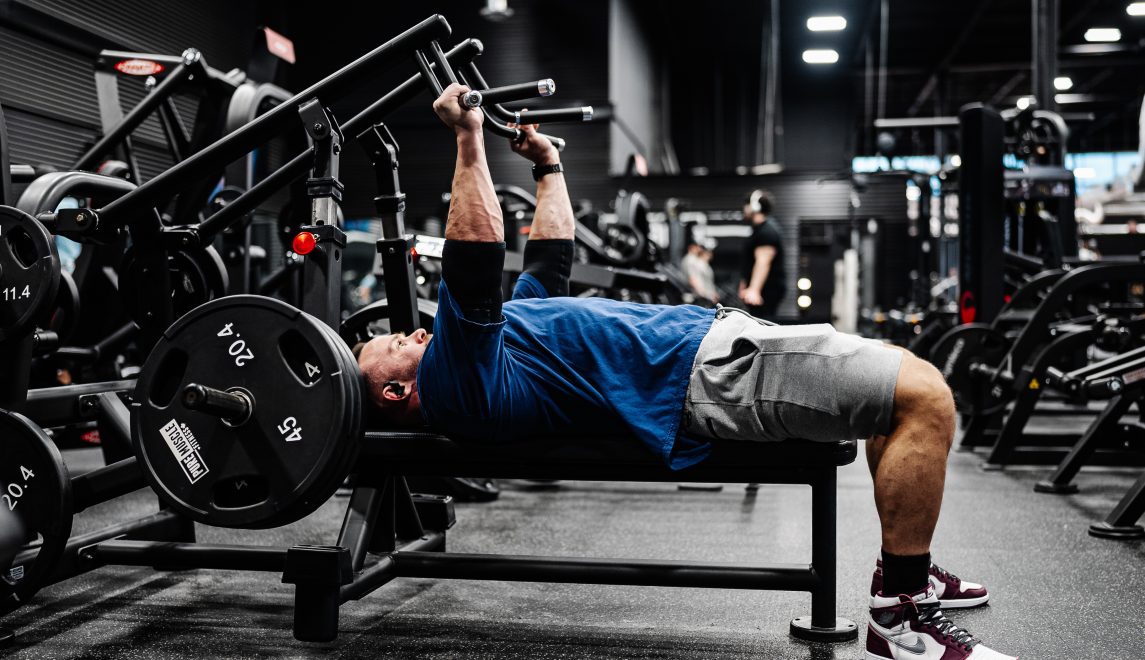Strength Development: A Nervous System Matter

Too many people think that getting strong and lifting heavy is mainly about muscles. In reality, that’s only part of the equation. Strength development isn’t just a muscle matter, it’s a nervous system matter. Before even talking about hypertrophy, protein, or split training, one thing needs to be understood: strength is coordination. Intra- and intermuscular coordination that is ruthlessly efficient. Without it, the weight on the bar means nothing.
Intramuscular coordination: the art of recruiting nearly 100% of your motor units
When you perform a movement, like the bench press, for example, it’s not the size of your muscle that makes all the difference. It’s the number of muscle fibers your nervous system can recruit at the same time. That’s intramuscular coordination. The more you train your body to activate a maximum of motor units (a motor neuron along with the muscle fibers responsible for contractions) in a very short period of time, the stronger you become. Dumbbells and barbells are just tools. The real lever is your nervous system. When you make progress in strength, you’re not necessarily building new
muscle right away; you’re becoming more efficient at using the muscle you already have. And it’s no easy task. It takes work, technique, and surgical attention to movement. Sloppy execution, poorly controlled sets, poorly performed reps? Those are missed opportunities to program your brain for strength. Want to progress? You need to train like a sniper, not a lumberjack.
Intermuscular coordination: the symphony of the entire body
Think your squat is good just because your thighs are burning? Sorry, but pain proves nothing. If your glutes, quads, adductors, abductors, abs, and back aren’t perfectly synchronized, you’re wasting potential, or worse, moving toward injury. Intermuscular coordination is the perfect orchestration between muscle groups to produce a powerful, stable, and efficient movement. When you perform a deadlift, your core, grip, hips, and back must speak the same language. One weak link, and it all collapses. The same goes for core exercises. Strength training must therefore cultivate this kind of “body intelligence.” Training in controlled instability, varying angles, and integrating free weights (dumbbells, kettlebells), are the things that force the body to learn to coordinate better.
Training for strength is educating your nervous system
Every set you perform should have a clear goal: becoming smarter in effort. Developing your ability to recruit, synchronize, and stabilize. The load? It’s just a stimulus. It’s the quality of the neural signal that determines the quality of your strength.
Want to get stronger?
Stop thinking in terms of muscles. Think in terms of connections. Activation. Unleash your power grid at full capacity. True strength isn’t visible to the naked eye; it’s in the precision of the signal your brain sends to your body.
Ready to put theory into practice?
Here is a 2-day training to kickstart your strength journey:
Day 1 – Upper body
A1: RS611 Press BB Flat 7,5,3,7,5,3 40X0 0s
A2: RS611 Row BB Rack pull 7,5,3,7,5,3 30X1 120s
B1: RS611 Press BB Flat From pin ( Sticking point ) 4 x 5 1010 0s
B2: D125 Row Chest supported 3-pauses on Concentric 4 x 5 2013 120s
C: A201 Forearm Flexion/extension Combo 4 x 60s N/A 90s
D: PW120 Neck extension Isometric 3 x 30s N/A 60s
Day 2 – Lower body
A1: RS611 Squat BB Back 7,5,3,7,5,3 40X0 90s
A2: B4800 Deadlift BB Romanian 7,5,3,7,5,3 40X0 90s
B1: RS611 Squat BB Back From pin ( Sticking point ) 4 x 5 1010 0s
B2: C106 Lying leg curl 1 ¼ Dorsiflexion Feet inward 4 x 6 3011 120s
C1: M118 Calf raise 1 ¼ Weight medial 4 x 8 3011 0s
C2- M126 Tibialis raise 1 ¼ (or a kettlebell) 4 x 8 3011 90s
-
Coach Simon D. Ducharme, Founder of the Institut FPP
Références:
Lecce, E., Del Vecchio, A., Nuccio, S. et al. Higher dominant muscle strength is mediated by motor
unit discharge rates and proportion of common synaptic inputs. Sci Rep 15, 8269 (2025).
https://doi.org/10.1038/s41598-025-92737-8
Del Vecchio, A., Shibata, E., Casolo, A., & Farina, D. (2023). Early motor unit adaptations to strength
training: Discharge rate and recruitment threshold changes before hypertrophy. The Journal of
Physiology, 601(2), 347–363.
https://doi.org/10.1113/JP282560
